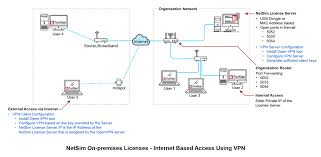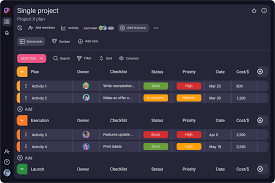Maximising Efficiency: Harnessing the Power of a Cutting-Edge Management Tool
The Importance of a Management Tool in Business
In today’s fast-paced and competitive business environment, effective management is crucial for the success of any organisation. A management tool plays a vital role in helping businesses streamline their operations, improve efficiency, and achieve their goals.
What is a Management Tool?
A management tool is a software application or system that helps businesses organise, plan, monitor, and control their activities. It provides managers with the necessary tools to make informed decisions, allocate resources effectively, and track progress towards objectives.
Benefits of Using a Management Tool
- Improved Efficiency: A management tool automates repetitive tasks, reducing manual effort and saving time.
- Better Decision-Making: By providing real-time data and insights, a management tool enables managers to make informed decisions quickly.
- Enhanced Communication: Collaboration features in management tools facilitate communication among team members, leading to better coordination and productivity.
- Increased Accountability: With clear visibility into tasks and responsibilities, employees are held accountable for their work, promoting a culture of accountability.
- Strategic Planning: A management tool helps businesses set goals, create action plans, and monitor progress towards achieving strategic objectives.
Popular Management Tools
There are various types of management tools available to businesses today, each designed to address specific needs. Some popular management tools include:
- Project Management Software: Helps teams plan projects, assign tasks, track progress, and collaborate effectively.
- Customer Relationship Management (CRM) System: Manages customer interactions and relationships to improve sales and customer satisfaction.
- Human Resource Management (HRM) Software: Streamlines HR processes such as recruitment, payroll, performance evaluation, and training.
- Inventory Management System: Tracks inventory levels, orders, sales, and deliveries to optimise supply chain operations.
In Conclusion
A management tool is an indispensable asset for any business looking to enhance its operations and achieve sustainable growth. By leveraging the capabilities of a management tool, organisations can improve efficiency, foster collaboration among team members,
make data-driven decisions,
increase accountability,
streamline processes,
enhance communication,
set strategic goals,
monitor progress,
adapt to changes swiftly,
ultimately achieve success in today’s dynamic business landscape.
Frequently Asked Questions About Management Tools: Examples, Benefits, and Best Choices
- What is an example of a project management tool?
- How many tools are there in management?
- What is the best work management tool?
- Why do we use management tools?
- Why would you use management tools?
- Which is a management tool?
What is an example of a project management tool?
An example of a popular project management tool is Trello. Trello is a versatile and user-friendly software application that enables teams to organise tasks, collaborate on projects, and track progress efficiently. With its intuitive interface and visual boards, Trello allows users to create task cards, assign responsibilities, set deadlines, and communicate seamlessly with team members. It provides a clear overview of project status and helps teams stay organised and focused on achieving their goals. Trello’s flexibility and customisation options make it a valuable tool for businesses of all sizes looking to streamline their project management processes effectively.
How many tools are there in management?
The number of tools available in management is vast and diverse, catering to a wide range of functions and needs within an organisation. From project management software to customer relationship management systems, human resource management tools, and inventory management systems, the options are plentiful. Each tool serves a specific purpose in helping businesses streamline operations, improve efficiency, and achieve their strategic objectives. The key is to identify the right combination of tools that align with the organisation’s goals and requirements to maximise productivity and effectiveness across various areas of management.
What is the best work management tool?
When seeking the best work management tool, it is essential to consider factors such as the specific needs of your organisation, the size of your team, and the nature of your projects. The ideal work management tool should offer features that align with your workflow requirements, facilitate collaboration among team members, provide real-time visibility into project progress, and enhance overall productivity. Popular options like Asana, Trello, and Monday.com are known for their user-friendly interfaces and versatile functionalities, making them suitable choices for various businesses. Ultimately, the best work management tool is one that seamlessly integrates into your existing processes and empowers your team to work efficiently towards achieving organisational goals.
Why do we use management tools?
Businesses use management tools to streamline their operations, enhance efficiency, and facilitate informed decision-making. These tools provide a structured framework for organising tasks, allocating resources effectively, and monitoring progress towards goals. By utilising management tools, organisations can improve communication among team members, increase accountability, and foster a culture of collaboration. Additionally, management tools help businesses adapt to changes swiftly, set strategic objectives, and ultimately achieve success in today’s competitive business landscape.
Why would you use management tools?
Management tools are essential for businesses seeking to streamline their operations, enhance efficiency, and achieve their strategic objectives. By utilising management tools, organisations can automate repetitive tasks, facilitate better decision-making through real-time data insights, improve communication and collaboration among team members, increase accountability by tracking tasks and responsibilities, and aid in strategic planning by setting clear goals and monitoring progress. Ultimately, the use of management tools empowers businesses to optimise their processes, adapt to changes swiftly, and drive success in today’s competitive business landscape.
Which is a management tool?
A management tool is a software application or system designed to assist businesses in organising, planning, monitoring, and controlling their activities effectively. It serves as a valuable resource for managers by providing them with the necessary tools to make informed decisions, allocate resources efficiently, and track progress towards achieving business objectives. Whether it’s project management software, customer relationship management systems, human resource management solutions, or inventory management systems, each type of management tool plays a crucial role in streamlining operations and enhancing productivity within an organisation.






